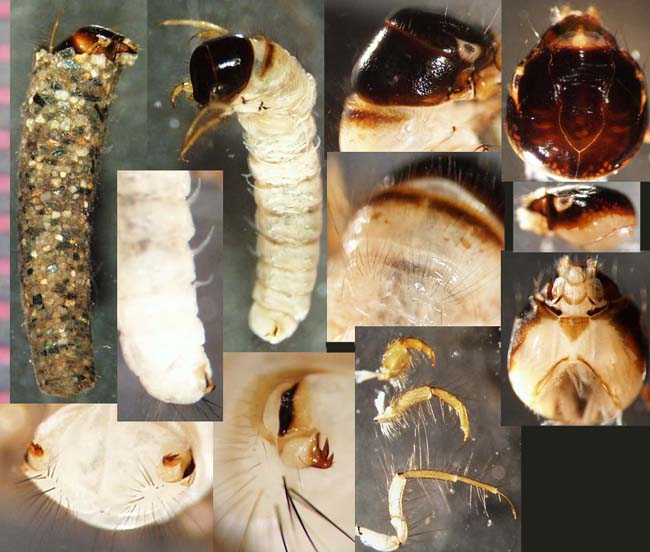
THE XERCES SOCIETY FOR INVERTEBRATE CONSERVATION Aquatic Invertebrates in Pacific Northwest Freshwater Wetlands |
| Identify taxa |
Members of the sericostomatid genus Gumaga are primarily found in the Southwest, but they can be collected in streams and springs of California and southern Oregon. Gumaga's cases are tubes of sand and fine rock fragments that can be quite long, thin, and strongly curved. They are not commonly encountered in wetlands. Gumaga larvae have an unusual appearance, with a characteristic head pattern that is very dark above and very light below; the ventral apotome also dark. The femur of the front leg is swollen and is as wide as it is long. Two large, square plates cover most of the top of the second thoracic segment. There are two relatively wide, oblong plates at the front of the metanotum that together cover much of the front quarter, but leave the rest bare. |
Size: large Identifying feature(s): head is very dark above and very light below, with the ventral apotome also dark; swollen femur of front leg is about as wide as it is long Habitat: flowing water, from cold springs to warmer streams. Tolerance to pollutants: moderate |
|
© 2007 Xerces Society
Contact info@xerces.org

